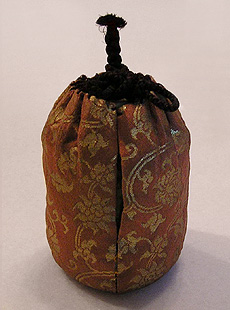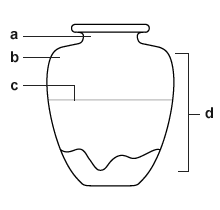|
||
 |
||
1 itokiri 糸切り: The clay bottom of the tea caddy is separated from the potter's wheel by using string that leaves a spiral mark. Japanese and Chinese tea caddies can be distinguished by these marks. Seto 瀬戸 objects have a right ward string cut, considered the normal string cutsince a potter's wheel turns clockwise, but Chinese objects have a left-ward side string cut because their potter's wheels turn counter clockwise.
2 uzu-itokiri 渦糸切り: If clay is removed from the potter's wheel with a nail or spatula, a spiral pattern will result from a gentle, extra turn of the wheel. This spiral is an important feature in the tea ceremony.
3 maru-itokiri 丸糸切り: Related to itokiri 糸切り. A string line, which is created on the bottom of the tea caddy when it is removed from the pottery wheel, this technique sometimes used for the most exquisite of tea caddies.
4 wa-itokiri 輪糸切り: To carve many concentric circles with a thin needle on the bottom of formed clay. The word may also be used for the pattern itself.
 |
 |
(C)2001 Japanese Architecture and Art Net Users System. No reproduction or republication without written permission.
掲載のテキスト・写真・イラストなど、全てのコンテンツの無断複製・転載を禁じます。

